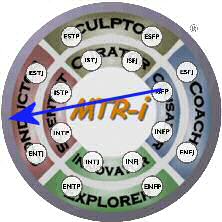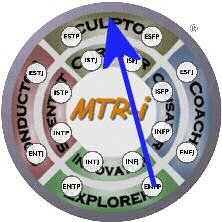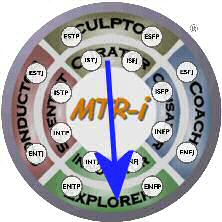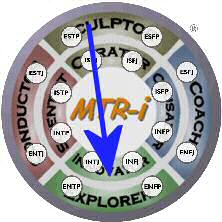Executive Coaching
The distinction between personality type and team role
It is not often recognised, in executive coaching, that using one's strengths or preferences can sometimes lead to poor performance. For example, when you are driving a car the hand you use to change gear should be the one nearest the gear lever. If your 'preferred' hand (the one you write with) is your other hand, then stretching across the steering wheel to change gear could result in you losing proper control of the car and causing an accident.In a similar way, when executive coaching is focused on improving performance or increasing success, the coachee sometimes needs to be encouraged into adapting to the jobs they are in, even if that involves using non-preferred behaviuors. Sometimes this choice is forced by the job (some occupations offer a lot of freedom in the way the job is approach, but others give people very little choice over which mental functions they can use). But the main difficulty arises (in executive coaching) when there is sufficient flexibility for the coachee to work in their preferred style, but better performance could be achieved using a non-preferred style. Our research indicates that 78% of people are using their preferred mental functions in their main work role, and 22% of people are spending most of their working time outside their preferences.
Stretch Calculator
The degree of stretch in a role can be identified in executive coaching by using the 'stretch calculator'. This is a wheel showing each of the MTR-i work roles, overlaid with personality preferences (ie where on the wheel each personality type prefers to work). The stretch is indicated by drawing a line from personality type to the team role being performed. Here are some real-life examples, with a brief description of how the information was used in coaching:

Example 1
An ISFP manager found his primary role was too big a stretch. He was playing the role of Conductor (which equates to the use of Extraverted Thinking, on the opposite side of the wheel). When he moved to a different job that fitted his preferences better (involving a mix of Crusader and Sculptor), he was much more fulfilled.

Example 2
An ENFP manager found he was having to perform the roles of Sculptor and Conductor most of the time (Extraverted Sensing and Extraverted Thinking). Rather than move jobs, he was able to delegate most of the Sculptor tasks to a member of his team. Most of his Conductor work was associated with running meetings, so he changed the style of the meetings (to be less structured), thereby finding greater opportunity to engage in the Explorer role (Extraverted Intuition).

Example 3
An ISTJ consultant was playing the role of Explorer (Extraverted Intuition). Although he found it a big stretch, he was able to sustain it because the role was time-limited (lasting just a few months), and he could see how his Explorer contribution would benefit the organisation.

Example 4
An ESTP was losing patience with the amount of time that the rest of his team spent discussing ideas (Explorer & Innovator roles, or Extraverted and Introverted Intuition). However, when he was shown a step-by-step process for how those ideas could be turned from discussion to action, he was much more willing to take part in those discussions himself and play those team roles - because he could see how they would ultimately contribute to making tangible progress.Conclusion
In each of these cases, the 'stretch' was managed better using one of the following techniques:- Moving to a job with a better degree of stretch between preferences and role
- Delegating or restructuring the current job so that it better suited personal preferences
- Putting a limit on the amount of time the role would be undertaken
- Reframing the job, seeing it in a different way, so that the stretch does not seem so important
©2013 Team Technology. Privacy policy and cookies.

